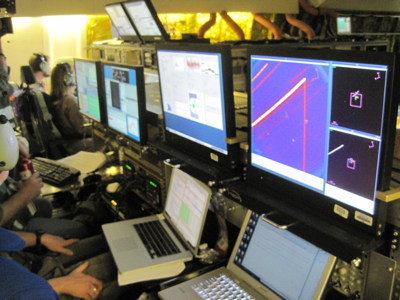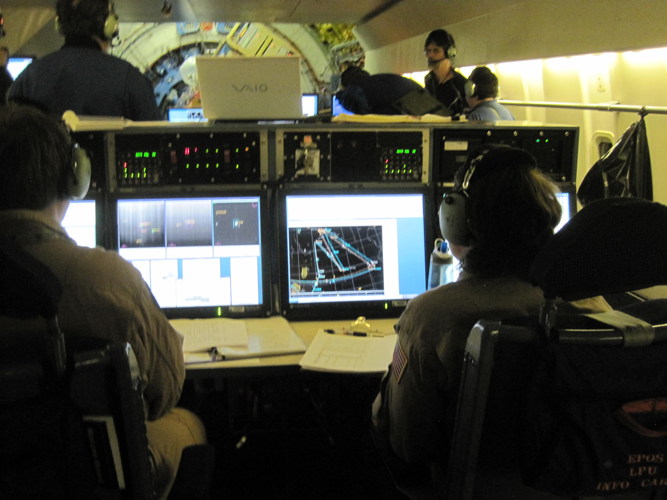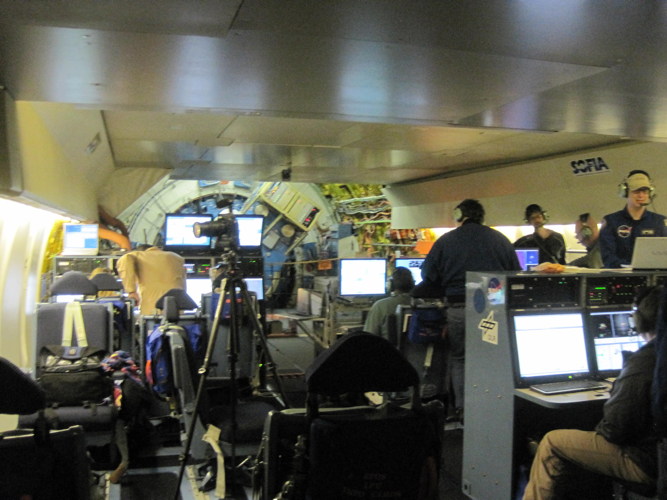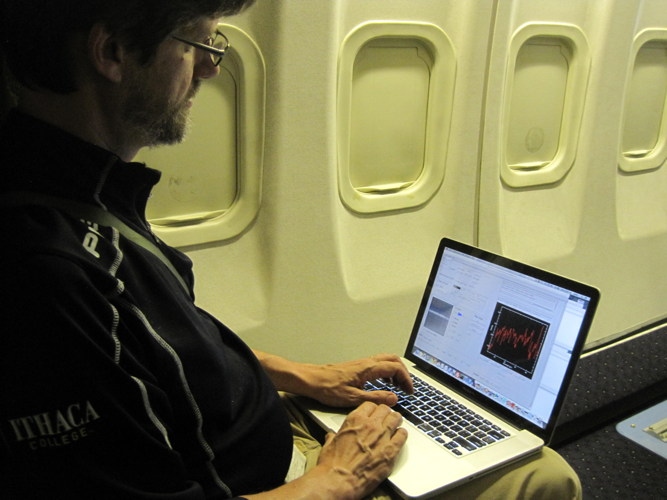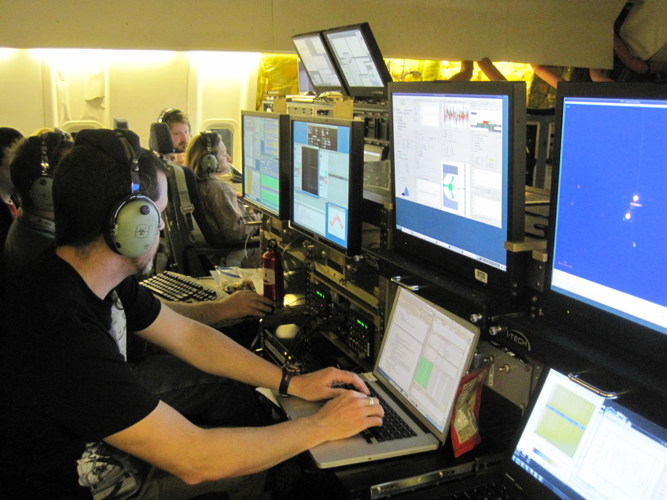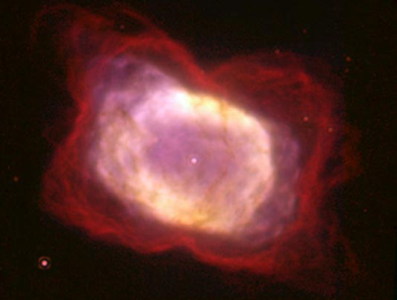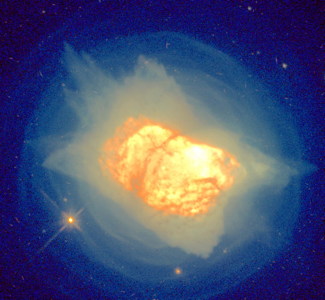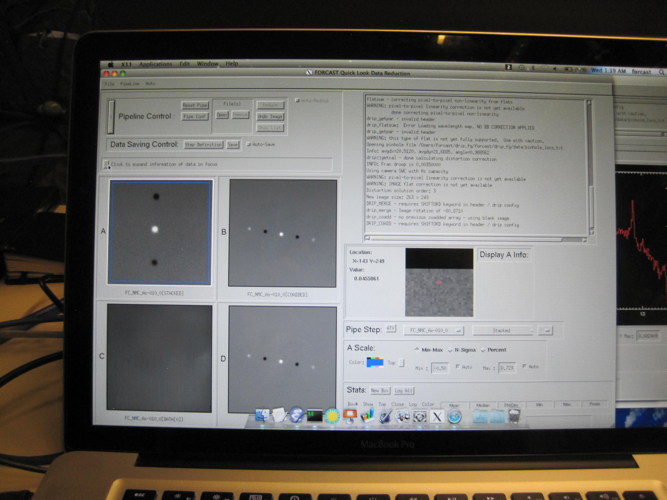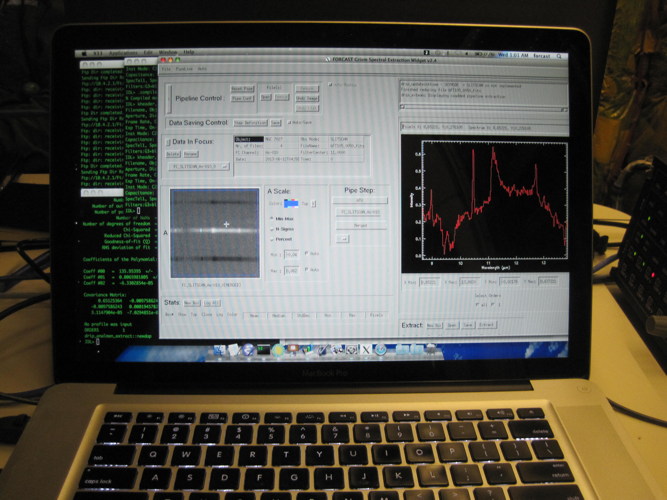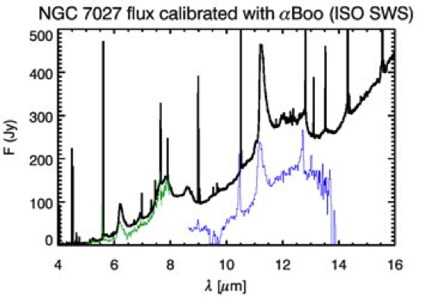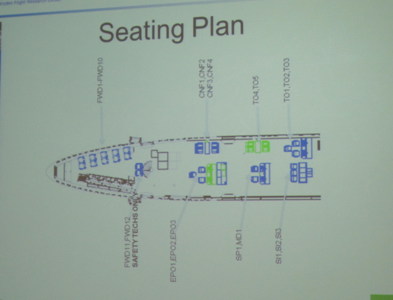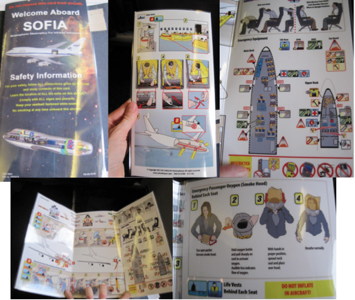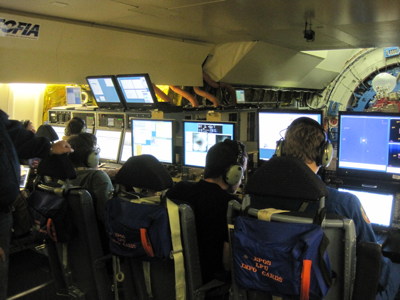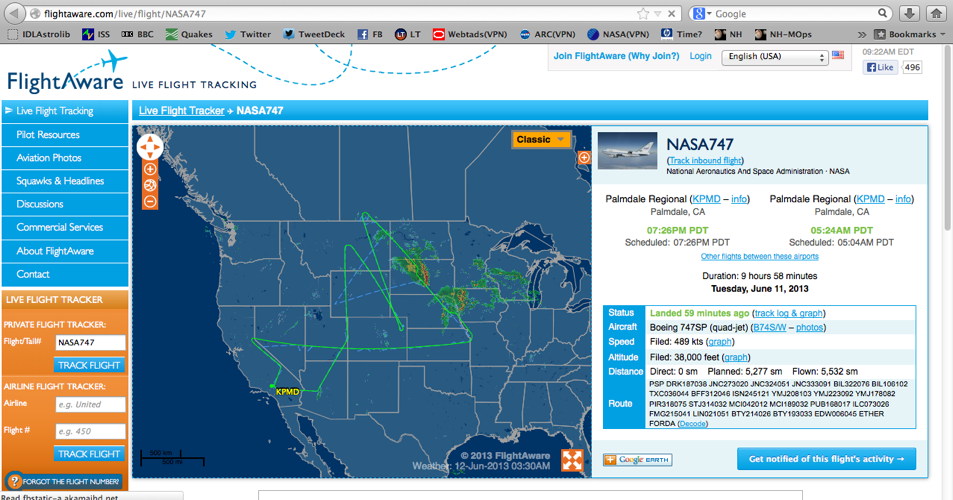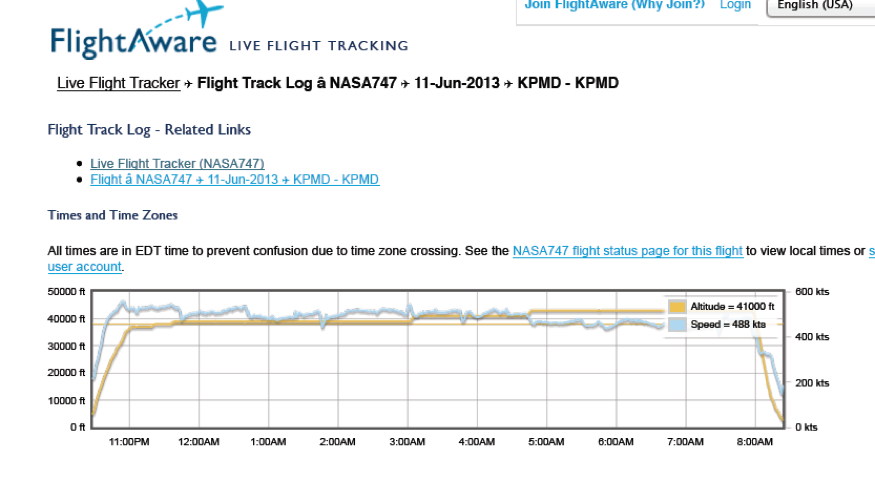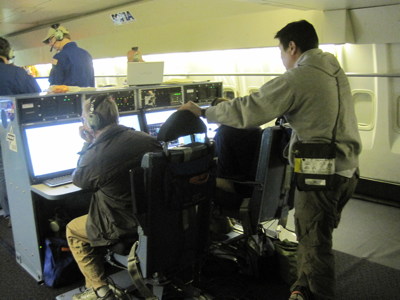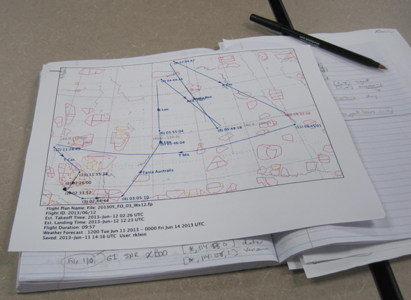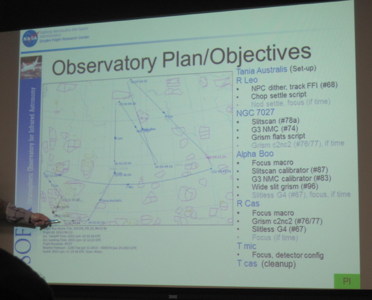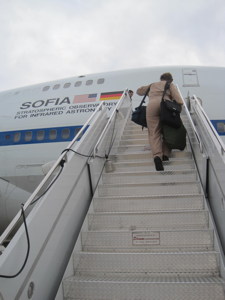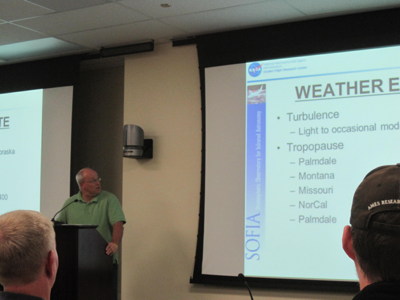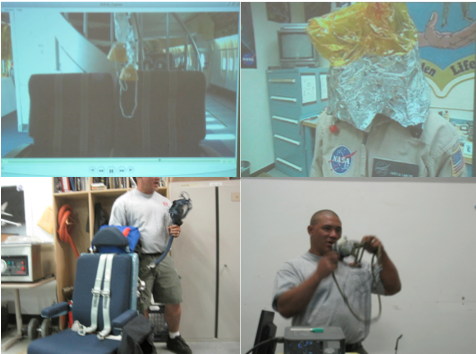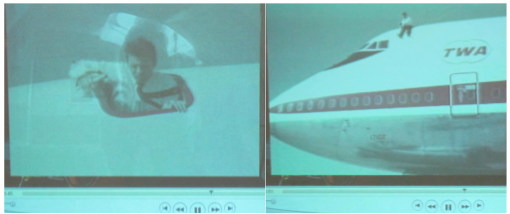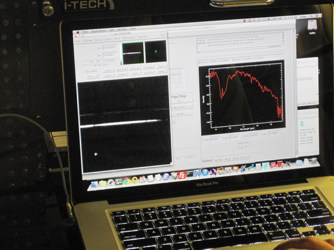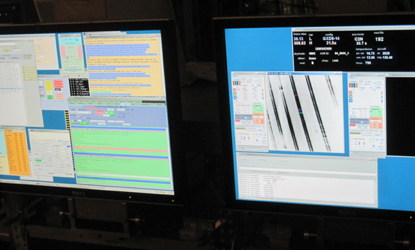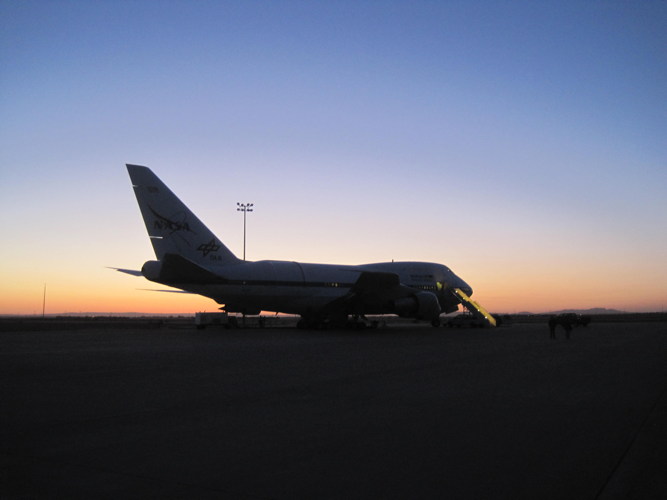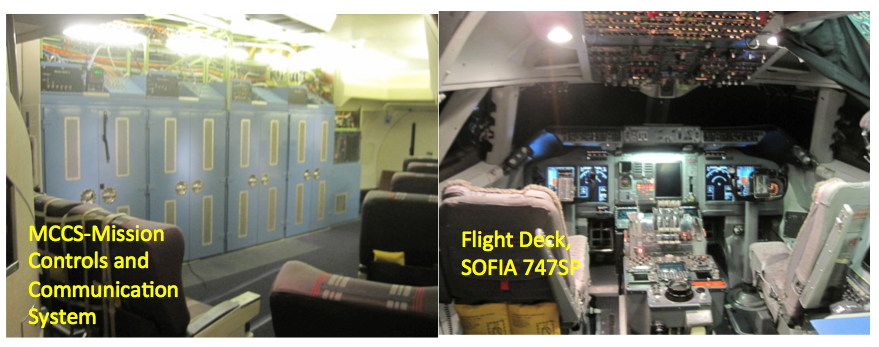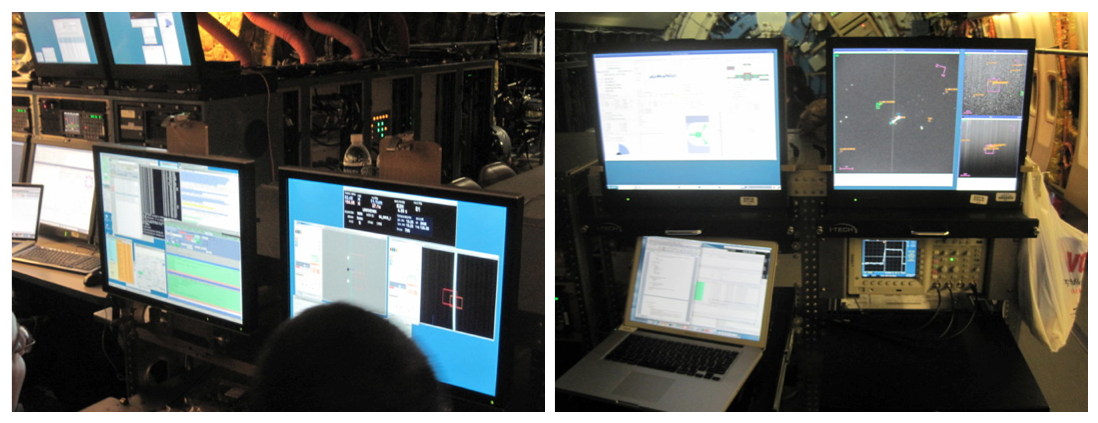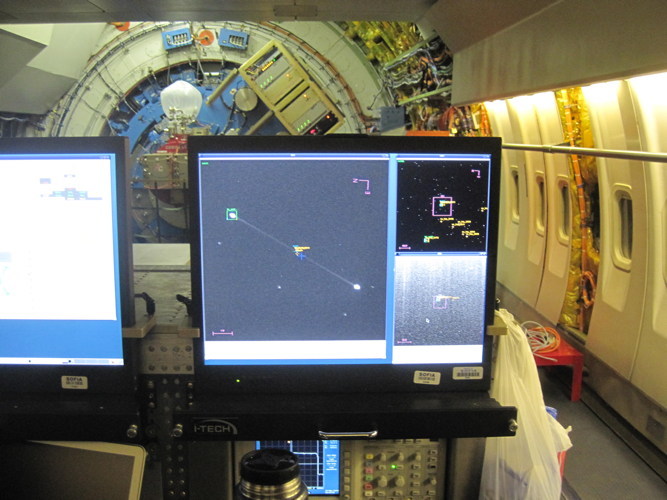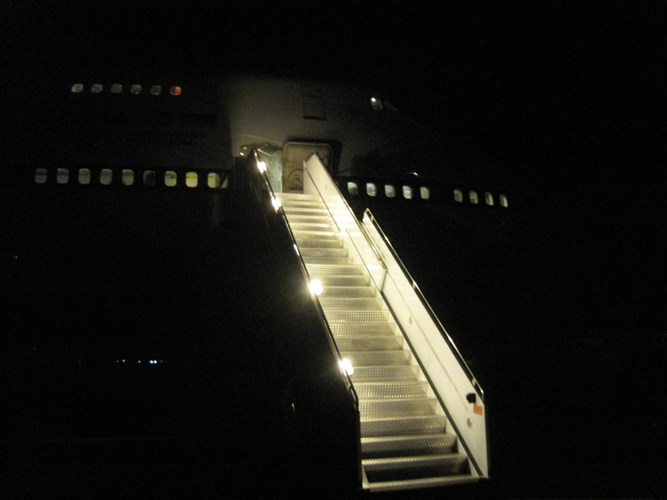Tonight, Thurs Jun 13th was to be a second opportunity for me to fly and test the FORCAST grism suite on SOFIA. However, that flight had a RTB or return to base, due to an aircraft item that manifest itself inflight. The pilots were awesome and returned us back to Palmdale, CA, safely.They followed their checklists and since most of tonight’s flight was to be thousands of miles over the Pacific, return to base was the right course of action. The flight is now rescheduled for next Tuesday. I am hoping I can remain on the passenger manifest and I can always do remote support.
For those who follow the SOFIA story, it has been a longtime coming. But you just have to admit it, SOFIA is just cool. First of all,airplanes are cool. 747s are even cooler. And to have a hole cut into a 747 to outfit it with a telescope that can point, even in turbulence, is just the coolest of coolness. I know I always knew that, but in all honestly, I did not realize it until I experienced it. I hope you have enjoyed my blog updates on this experience.
SOFIA is also an amazing piece of engineering. If you think about it, a lot of engineering has gone into the airplane, the modifications to support the telescope, the telescope design and operation, all the different science instruments, and the support infrastructure to make it all happen.Thanks to all the people who made this unique observatory possible, and those that are working hard today getting it operational.
For those astronomers out there, a call is on the street for science observing on SOFIA. Proposals are due Jun 28th, 2013 for the 2014 observing cycle. http://www.sofia.usra.edu/
For those interested in applying to be SOFIA Airborne Ambassadors, definitely check out that amazing program. The current application period is closed. But check in the future for the next call.
http://www.sofia.usra.edu/Edu/programs/ambassadors/ambassadors.html
SOFIA is a powerful observatory. Its legacy is about to happen. There are not many telescopes out there that can access the infrared skies. By flying above the water vapor in our atmosphere, the infrared sky is revealed to us. Of course, our eyes cannot see such wavelengths, but our infrared detectors can. We can use these tools on SOFIA to answer questions about the formation of the stars and galaxies and their evolution. SOFIA with its 20 year lifetime and its mobility to be operated from anywhere on the planet that has a runway, has only yet to contribute to understanding of what’s out there. It’s an excellent training platform for students and teachers. In fact, on the line ops and the flights I was on, teachers and undergraduate and graduate students participated. What a great opportunity for a grad student to have access to this state-of-the-art telescope! The four I have met these past few weeks are so jazzed about what they are going to observe with SOFIA.
SOFIA after the successful completion of Flight#105, the morning of Jun 12, 2013. We got over 8 hrs of time at >= 40,000ft checking out the modes to commission the FORCAST mid-infrared camera with grism complement.
I still have work to do on my small role in the SOFIA story. We collected some (not all) of our grism commissioning data. With next week’s flight, we aim to fill in those gaps. I have data now to reduce and check out our quicklook pipeline that we are tailoring for the observers who request to use of grisms to do their science. And, that long awaited paper on the actual performance of these novel infrared optics I helped develop is now in the works!
I look forward to flying again on SOFIA, as an observer. I have a few ideas of neat things to observe.
I close my blog series with an amusing observation. On my Jun11th flight, I spent most of my time facing the science instrument/telescope area, which is, towards the rear of the plane. I was standing a lot, and occasionally would sit down at the conference area mid-deck to do some data reduction. All that time I stood watching the telescope, participating in discussions about the data, etc. looking aft, I realized I was journeying on SOFIA, as viewed by someone outside the plane, backwards.
Terry Herter (Cornell), FORCAST Principal Investigator & many-time SOFIA flyer, remarked to me, “After a few minutes in the air, you forget you are in an airplane.” And that’s precisely that. I thought I was observing at a telescope observatory. The only drawback: I could not walk outsideto look at the stars, as I just love to do when I am a dark site, like at an observatory. But that’s okay, I was using state-of-the-art instruments to look at the stars with a different set of infrared eyes.
I’m not sure how the comments section on these blogs work, but I’d be happy to answer any questions. Just drop me a line. Kimberly.Ennico at nasa dot gov.
The blog author aboard SOFIA during take off on Jun 13, 2013. Notebook in hand. Mind on the targets we were to observe that flight. Smile for the adventure and learning ahead.



